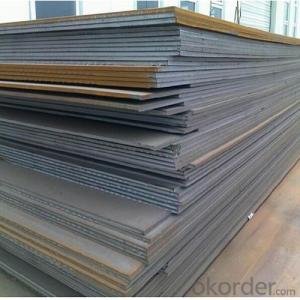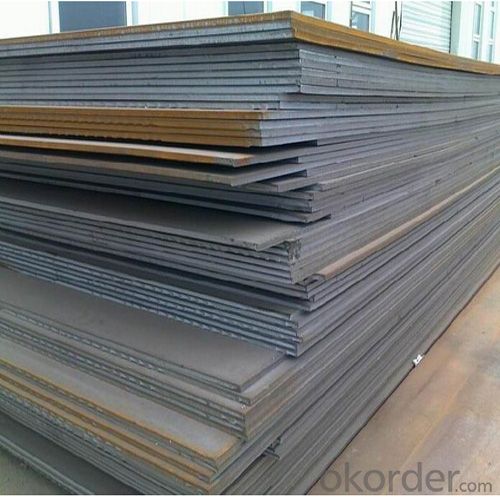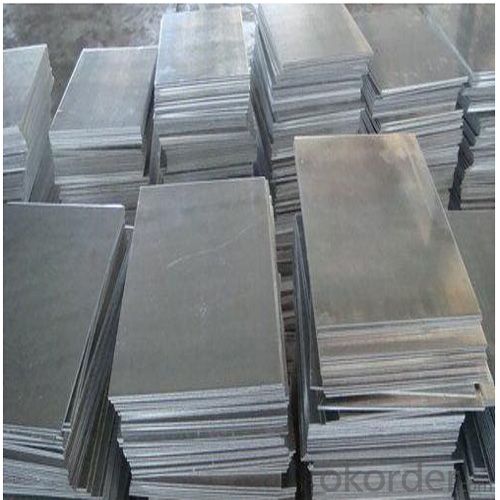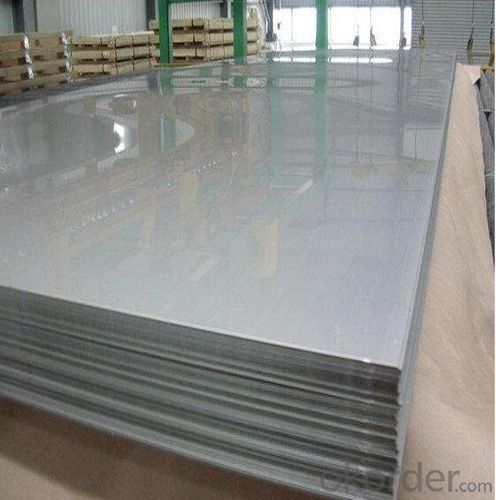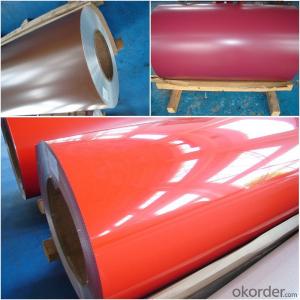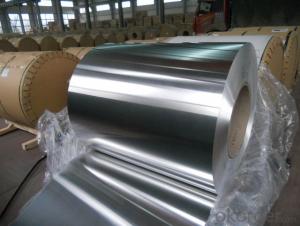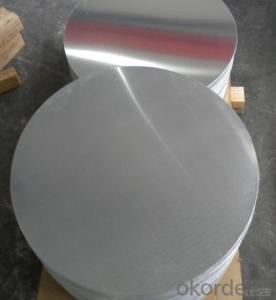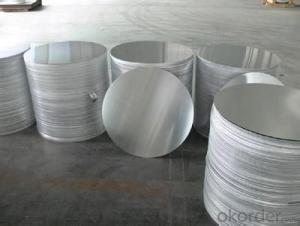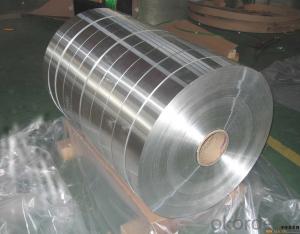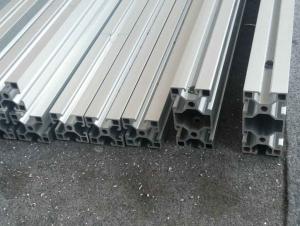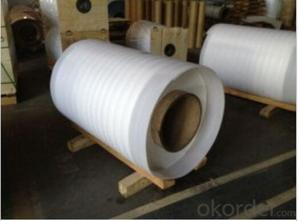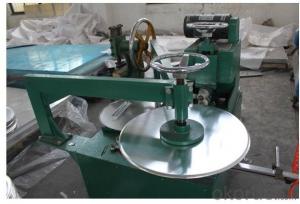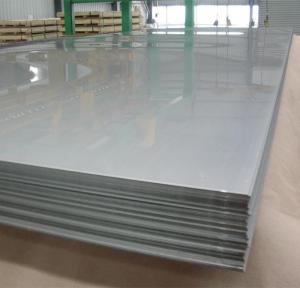Light Aluminum Sheets for Cookware and Vehicle Parts
- Loading Port:
- Shanghai
- Payment Terms:
- TT OR LC
- Min Order Qty:
- 5 m.t.
- Supply Capability:
- 10000 m.t./month
OKorder Service Pledge
OKorder Financial Service
You Might Also Like
Specification
1.Structure of Aluminum Alloy Plate for Cookware and Vehicle Parts Description:
We can produce aluminum sheet,color aluminum sheet and plastic composite panel base material. They are widely used in construction and decoration, hardware and electric appliances manufacture, automobile manufacture and other industrial and civil purposes, such as electronic capacitor, rice cooker, refrigerator, computer casting, lamp shade, air-conditioner, cosmetics cover and box, air-conditioner radiator, inner container of disinfecting cabinet, ceiling board, automobile motherboard, cover board and top board, etc.
2.Main Features of Aluminum Alloy Plate for Cookware and Vehicle Parts :
Cold Rolling and Hot Rolling Aluminum Sheet
Good Machinability
High Quality
Competitive Price
3. Aluminum Alloy Plate for Cookware and Vehicle Parts Images:
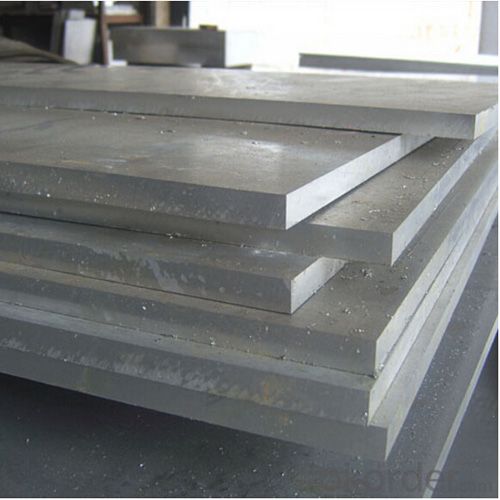
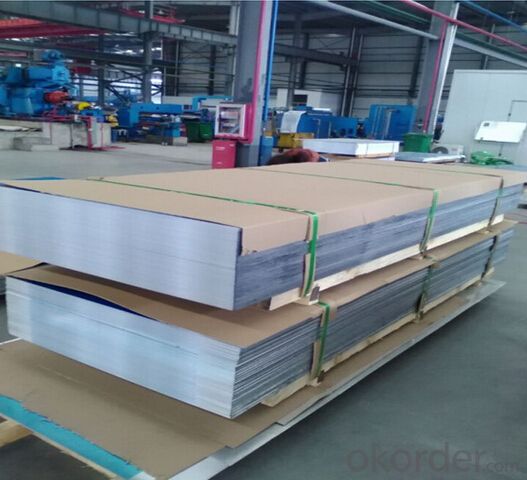
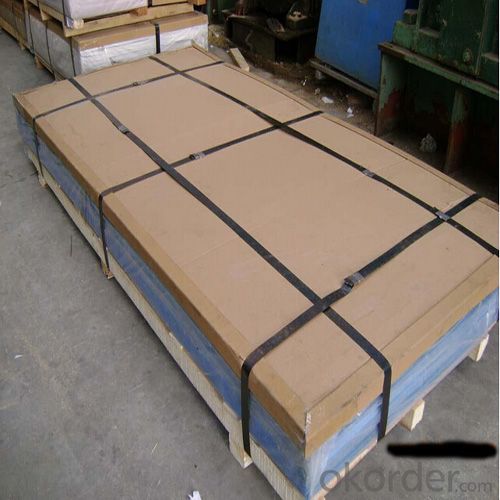
4. Aluminum Alloy Plate for Cookware and Vehicle Parts Specification:
| Alloy No. | Thickness (mm) | Width (mm) | Length (mm) | Temper | |
| A1050,A1060, A1070,A1100 | 0.2-100 | 20-2200 | 20-8000 | O,H12,H22,H14,H16,H18, H24,H26,etc | |
| 3A21,A3003,A3105,A3004 | 0.2-100 | 20-2200 | 20-8000 | O,H14,H18,H24,etc | |
| A5052 ,A5005,A5083,A5754 | 0.2-100 | 20-2200 | 20-8000 | O,H18,H24,H32,H34,H111,H112 ,etc | |
| A6061,A6082,A6063 | 0.2-200 | 20-2200 | 20-8000 | T4,T6, T651,etc | |
| A8011 | 0.2-100 | 20-2200 | 20-8000 | O,H12,H22,H14,H16,H18,H24,H26, etc | |
5.FAQ
Q1.How long have you been in this product?
A1:More than 10 years.
Q2. What's the minium quantity(MOQ)?
A2. 5 Metric tons
Q3. How long is shipping time?
A3. 7 (ready-made products)-25 days(OEM)
Q4. How do you guarantee the quality?
A4. 1. Cooperating and Exchaning experience with sevral quoted aluminum companies
2. Japanese and Swiss production line and skilled works (regular training and testing)
3. more than 10 years production experience.
Q5. Do you have after sale service?
A5. Yes. Any quality problem occurs within one year, pls take photoes,we will be responsible.
- Q: What are the different types of finishes used for decorative aluminum sheet?
- There are several different types of finishes that can be used for decorative aluminum sheet to enhance its appearance and provide added protection. Some of the most common finishes include: 1. Mill finish: This is the standard finish that aluminum sheets have when they come straight from the mill. It has a smooth, shiny appearance but lacks any additional treatments or coatings. 2. Anodized finish: This finish involves an electrochemical process that creates a durable, corrosion-resistant layer on the surface of the aluminum. Anodized finishes can be clear or colored, and they provide a decorative, matte appearance. 3. Brushed finish: Also known as satin finish, this type of finish involves brushing the aluminum sheet with a fine abrasive material to create a pattern of fine lines or scratches. It gives the sheet a textured, non-reflective surface that hides any imperfections. 4. Polished finish: This finish involves polishing the aluminum sheet with a series of abrasive materials to create a smooth, reflective surface. It gives the sheet a shiny, mirror-like appearance and is often used for decorative purposes. 5. Painted finish: Aluminum sheets can also be painted with various types of coatings to provide different colors and finishes. These coatings can be applied through techniques such as powder coating, liquid painting, or coil coating, and they offer both decorative and protective benefits. 6. Embossed finish: In this type of finish, the aluminum sheet is pressed with a pattern or design to create a three-dimensional surface. Embossed finishes can vary in depth and detail, and they add texture and visual interest to the sheet. These are just a few examples of the different types of finishes used for decorative aluminum sheet. Each finish offers its own unique look and benefits, allowing for a wide range of design possibilities.
- Q: What are the common thicknesses available for aluminum sheets?
- The common thicknesses available for aluminum sheets range from 0.006 inches to 0.25 inches, with standard options including 0.016, 0.020, 0.025, 0.032, 0.040, 0.050, and 0.063 inches.
- Q: Can aluminum sheet be used for automotive body panels?
- Yes, aluminum sheet can be used for automotive body panels. In fact, aluminum is becoming increasingly popular in the automotive industry for its numerous advantages. Firstly, aluminum is lighter than steel, which helps to improve fuel efficiency and overall vehicle performance. Additionally, aluminum is highly corrosion-resistant, making it a durable choice for automotive body panels that are exposed to the elements. Aluminum also has excellent formability and can be easily shaped into complex designs, allowing for greater design flexibility in vehicle manufacturing. Furthermore, aluminum offers superior crash absorption capabilities, enhancing the safety of vehicles. However, it's important to note that while aluminum is a viable option for automotive body panels, it may require specialized equipment and techniques for welding and repair.
- Q: This question asks for a list of various methods used to treat the surface of aluminum sheets to improve their properties or appearance.
- <p>There are several types of surface treatment for aluminum sheets, each serving different purposes. These include: Anodizing, which creates a protective oxide layer and enhances corrosion resistance; Chemical Conversion Coating, such as chromate conversion, to improve paint adhesion and corrosion resistance; Electrolytic Polishing, which provides a smooth, shiny surface; Powder Coating, an electrostatic process that applies a durable coating; Paint Coating, offering a wide range of colors and finishes; and Mechanical Polishing, which smooths the surface and improves reflectivity. Each treatment has its specific applications and benefits, depending on the desired outcome for the aluminum sheet.</p>
- Q: What are the different methods of surface cleaning for aluminum sheets?
- Aluminum sheets can be cleaned using various methods, each with its own advantages and suitability for different cleaning needs. One method is mechanical cleaning, which involves using techniques like brushes, abrasive pads, sandpaper, or a wire brush to remove dirt, stains, and oxidation from the surface. However, caution must be taken to avoid scratching the surface. Chemical cleaning, on the other hand, utilizes specific cleaning agents or solutions designed to dissolve or remove dirt, grease, oil, or other contaminants from aluminum surfaces. The choice of cleaning agent depends on the type of dirt or stain to be removed. High-pressure water cleaning is a method that employs a strong water jet to dislodge dirt or grime from the aluminum surface. It works well for removing loose debris or light dirt from larger areas, but may not be effective for heavily soiled surfaces. Steam cleaning involves using high-temperature steam to loosen dirt, grime, or other contaminants, making them easier to wipe or rinse away. It is versatile and suitable for both small and large surfaces. Another specialized method is electrolytic cleaning, which uses an electric current to remove contaminants. The aluminum sheet is immersed in a cleaning solution, and the electric current attracts the contaminants to a sacrificial electrode, leaving the sheet clean. However, this method requires specialized equipment and expertise. When choosing the appropriate cleaning method, it is important to consider the specific requirements, condition of the sheet, and desired level of cleanliness. Testing the chosen method on a small, inconspicuous area is also advisable to avoid potential damage.
- Q: On candle when candle flame is about 1.000 degrees celsius and melting point of aluminum is 660 degrees celsius.
- if a candle is 1000 degrees u can melt aluminum with it, it wont happen straight away, you have to give the metal a long time to heat up as it conducts heat it will take ages, you will prob let go or get bored before the metal has chance to heat up
- Q: Can the aluminum sheets be used for architectural cladding?
- Indeed, architectural cladding can make use of aluminum sheets. Owing to its lightweight properties, durability, and versatility, aluminum remains a favored selection for cladding purposes. Its pliability and ability to assume diverse forms make it ideal for a broad spectrum of architectural designs. Furthermore, aluminum boasts corrosion resistance, ensuring its longevity as a cladding option. Moreover, the possibility of coating aluminum in various finishes enables customization to align with the desired aesthetic of the structure. All things considered, aluminum sheets emerge as a dependable and pragmatic choice for architectural cladding.
- Q: Are aluminum sheets suitable for insulation purposes?
- Indeed, aluminum sheets prove to be well-suited for insulation endeavors. Aluminum, being a notably reflective substance, possesses the ability to effectively impede the transmission of heat, rendering it a superb selection for insulation purposes. With its low emissivity value, aluminum reflects heat radiation rather than absorbing it, thereby aiding in the preservation of a uniform temperature within a given area and diminishing the necessity for heating or cooling. Moreover, aluminum sheets are characterized by their lightweight nature, straightforward installation process, and resistance to moisture, making them an eminently practical choice for insulation in a plethora of applications, including attics, walls, floors, and HVAC systems.
- Q: I just built a stone wall with illuminated glass features embedded, and to make them shine evenly, I had all sides but the visual one wrapped in industrial thickness aluminium foil. One week later, the foil has disintegrated. I have used type 10 Portland. What is going on?
- Embedded aluminum roof flashing, aluminum water stops, aluminum electrical conduit, introduced aluminum powder (sometimes used to foam concrete), or embedded structural aluminum shapes may all corrode in concrete or mortar. In all cases, a reaction that forms aluminum hydroxide and hydrogen gas occurs, and may cause expansion and cracking of the concrete or mortar. The common use of calcium chloride (or other alkali compounds), and dampness of the concrete increases the reaction rate. Usually, coating the aluminum with bituminous paint, impregnated paper or felt, plastic, or an alkali-resistant coating will prevent or sharply reduce the corrosion.
- Q: How much do aluminum sheets typically weigh?
- The weight of aluminum sheets can vary depending on their thickness and dimensions. However, on average, aluminum sheets typically weigh between 2.7 to 3.0 grams per square centimeter.
Send your message to us
Light Aluminum Sheets for Cookware and Vehicle Parts
- Loading Port:
- Shanghai
- Payment Terms:
- TT OR LC
- Min Order Qty:
- 5 m.t.
- Supply Capability:
- 10000 m.t./month
OKorder Service Pledge
OKorder Financial Service
Similar products
Hot products
Hot Searches
Related keywords
